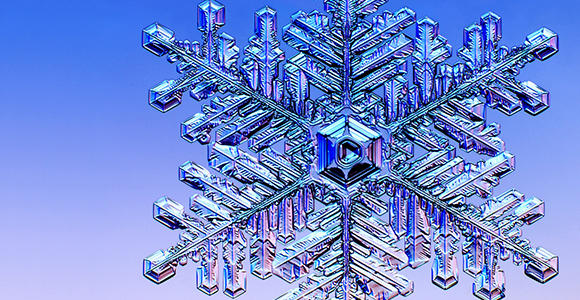
Section Branding
Header Content
Why is a Snowflake Unique? The Science of Winter
Primary Content

What makes a snowflake a snowflake and is it really unique? Why are some parts of the country grey and a bit nippy this time of year, while others experience bone chilling temperatures? You can pose these questions to your students and turn the impending arrival of the coldest season of the year into lessons with PBS Learning Media’s “The Science of Winter” which is this week’s theme.
They can learn about hibernation, the ecosystems of Earth’s polar regions and get advice from a wise cracking snowman.
Here is a snapshot of some of the lessons and grade levels they apply to:
Joy Learno: Snowman: Grades PreK-1
This video segment from Between the Lions is an animated non-fiction segment starring talk show host, Joy Learno. Joy interviews a snowman who likes to crack jokes about snow and ice. Then the snowman starts to melt. This video segment provides a resource for Vocabulary, and Language and Vocabulary Development.
Life on the Ice: Grades 9-13+ (Note this video is downloadable)
In this video from the NSF and DRI, learn about WAIS Divide, an ice core project on the West Antarctic Ice Sheet (WAIS), and hear from the people involved about the hard work and light-hearted fun that typifies day-to-day life in the WAIS Divide camp. Research scientist Brian Bencivengo, science coordinator Heidi Roop, and doctoral candidate Gifford Wong describe their experiences living on the frozen continent and the importance of the work they do. They are part of a team of 30 to 40 women and men collecting an ice core that they hope will help improve our understanding of past, present, and future climate conditions.
Why Do Snowflakes Come in So Many Sizes: Grades 6-8
Are all snowflakes truly unique? What are the physical forces that drive snowflakes to come in so many shapes and sizes? In this lesson, students build an apparatus that creates conditions similar to a winter cloud and produce their own snow crystals indoors. By watching the snow crystals grow, they learn about the molecular forces that shape ice crystals, and gain a deeper understanding of the states of matter. By exploring media resources, including microphotographs of real snowflakes, students also learn about molecular forces, the particulate nature of matter, and condensation.
Polar Sciences Collection
Earth's polar regions may seem remote, but they are an integral part of the entire Earth system. For example, pollution from other areas affects Arctic and Antarctic ecosystems, and changes in the icy landscapes of the polar regions may influence global ocean circulation patterns and accelerate climate change. The fourth International Polar Year (IPY) was a 2007–2008 international campaign to advance polar science and better understand global climate change through an interdisciplinary approach. Learn about the importance of studying the poles through these media resources, adapted from a variety of sources. Explore the polar regions, the changes they are experiencing, and their connections to the rest of the world.
And for more insight into winter weather patterns, check out this vintage post "Students Ask: How Meteorologists Predict the Weather."
What makes a snowflake





